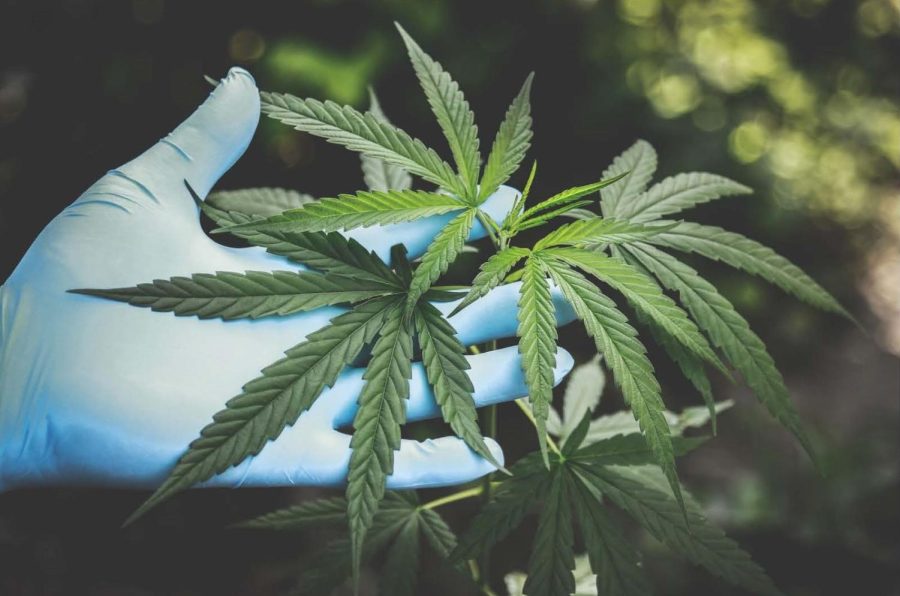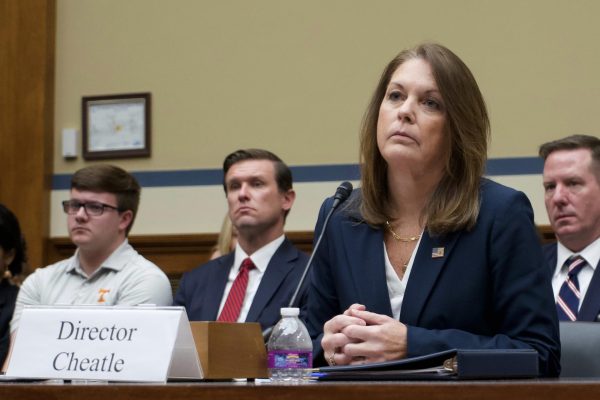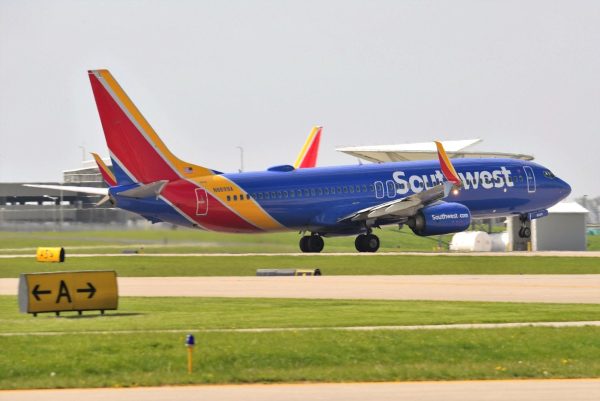Illegal pot grows are causing worries in ‘Toke-lahoma’
Despite its late entry into the world of legal cannabis, Oklahoma’s hands-off manner of managing the new industry has sparked a boom and earned the state the nickname “Toke-lahoma.”
The lack of regulation has led to foreign entities and investors flooding into Oklahoma, offering Oklahomans four, five, up to eight times the value for their land. The majority of the growers are from Mexico and China, but generally come from across the globe.
Mark Woodward, spokesman for the Oklahoma Bureau of Narcotics, said his agency has received reports of cannabis farms siphoning part of their harvests to out-of-state buyers, which is illegal under federal law. But given the sheer number of grow sites, Woodward said the state is “not equipped in the slightest” to fully investigate the matter.
Sam Tabachnik, writing for the Denver Post, said Oklahoma, which is politically red, became almost overnight the fastest-growing marijuana producing state in the nation.
Legal grows in Oklahoma are normally regulated for their water and electric use as well as plants and inventory. Illegal grow operations, on the other hand, are unmonitored and thus plant and use resources as they please.
Rural land is preferred for the illegal operations, as property is cheaper and out of the public eye. And with community banks being cornerstones of the small towns in Oklahoma, bankers are having to deal with the issue.
“We have had to be more diligent, as there has been an increase in customers trying to start marijuana grows with their bank accounts,” said Amada Alvidrez, regional retail manager at Equity Bank in Guymon.
“Some customers will try to deposit large sums of cash with no paper trail or explanation as to the origin. Equity Bank has seen the effects of the increase in growers in the area,” Alvidrez said.
Legal grow operations can cause their own types of problems.
Companies have been drawn to Oklahoma by the freedom to operate, but some are finding that the lack of regulation is affecting those who attempt to do things properly.
Investigators say evidence points to out-of-staters, including some from Colorado where regulation is stricter, coming to Oklahoma to run unregulated marijuana businesses.
Oklahoma has no cap on how many plants one operation can cultivate, and no limit on how many grows or dispensaries the state can handle. Colorado caps growers at a certain number of plants based on the number of medical marijuana card holders in the surrounding area.
According to the Marijuana Policy Project, nearly 376,000 Oklahomans hold medical marijuana cards – about 10% of the state’s population and by far the largest percentage nationwide. Such demand necessitates large-scale cultivation. Just three years after legalization, the state has seven times more growers than Colorado and twice as many dispensaries, even though Colorado legalized the use of medical and recreational marijuana in 2012.
A grow license in Oklahoma costs just $2,500, but state legislators recently passed a bill that will require growers to pay a $50,000 security deposit.
Only 40 dispensaries are allowed in nearby Arkansas for its 78,425 medical marijuana card holders. Nearly a decade after medical marijuana was legalized in Connecticut, there are only four cannabis manufacturers and 18 dispensaries for the 41,292 active card holders.
Arkansas requires a licensing fee of $100,000, along with $500,000 performance or surety bonds that require growers to show proof of completing certain activities such as the creation of processing facilities and testing laboratories. An application costs $10,000 in New York, with a $200,000 registration fee.
Oklahoma decided to let the market be more unencumbered. As a result, the state is now home to nearly 12,600 marijuana business licenses, including more than 8,600 growers and upwards of 2,300 dispensaries. That is more than double Colorado’s number of recreational and medical retailers, and Oklahoma has 1.8 million fewer people.
Oklahoma County has 94 grows (one facility per 8,471 residents) while less populated counties such as Sequoyah and Carter have more than 200 operations, or one facility per 250 residents.
Some growers employ workers from impoverished regions of Mexico and China, who live and work in destitute, unsanitary conditions for below-average wages. Many send money home to their families.
Meanwhile, land prices are going for five times their value, with eager growers paying cash.
Late last month, after a fire at a facility in Logan County injured two people, state narcotics agents seized 4,000 to 5,000 pounds of marijuana product, according to The Oklahoman. Officials said it was an illegal factory operation.
With more than 200 dispensaries in Sequoyah County alone, the youth population has not been immune. Ray Watts, a Sequoyah County commissioner, said children as young as 12 have been caught at school with marijuana.
“It’s been surreal,” Watts said. “We’re now having to use drug dogs in the elementary schools, something I never thought I would see.”
In the past month, marijuana arrests in Sequoyah County for ages 12 and older increased 30% and are 76% higher than the national average.
The environment has been substantially impacted by the excess of illegal marijuana growers.
“It’s detrimental to the community,” Oklahoma Bankers Association President Adrian Beverage said. “The health and environmental risks are also present.”
The OBA is working with the state legislature in hopes of finding a solution.
“The OBA is working to partner with environmentalist groups and lawmakers to craft legislation to put an end to these safety risks,” Beverage said.
Cannabis crops consume heavy power loads for lighting, temperature, monitoring and hydration controls, which strains power grids. A typical cannabis plant consumes six gallons of water per day throughout the growing season. According to the bankers who deal with the aftermath of these failed grows, this has caused a water shortage in rural counties and severely impacted the environment.
As marijuana is still a Schedule I drug, it is difficult for banks to efficiently and legally accept payments from known dispensaries, even if it is considered “medical.”
The American Bar Association says marijuana-related businesses may feel as if their revenues bear a mark of condemnation, as many have struggled to find a bank prepared to offer basic financial services.
Marijuana’s peculiar legal status as a nationally forbidden controlled substance that is lawful in an increasing number of states is putting banks across the nation in a difficult spot. Many are cautious of potentially breaching federal anti-money laundering and other regulations by transacting the earnings of federally illegal marijuana enterprises, restricting the access of marijuana-related businesses.
“It is still considered illegal in a lot of aspects for us,” Beverage said. “We’re trying to work with the dispensaries and lawmakers, but it has proven difficult with the increase of illegal activity and violent crimes surrounding this business.”
Gaylord News is a reporting project of the University of Oklahoma Gaylord College of Journalism and Mass Communication. For more stories by Gaylord News go to GaylordNews.net.












